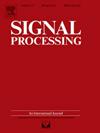面向后期融合多视图聚类的可扩展共识快速图滤波方法
IF 3.4
2区 工程技术
Q2 ENGINEERING, ELECTRICAL & ELECTRONIC
引用次数: 0
摘要
多视图数据的快速增长,由于其复杂性和高维性,对聚类算法提出了重大挑战。后期融合多视图聚类(LFMVC)经常受到低质量基本分区的困扰。为了解决这些挑战,我们提出了一种可扩展的方法,称为共识快速图滤波用于后期融合(CFGFLF)多视图聚类。该方法将多视图一致图滤波和离散聚类集成到统一的优化框架中,提高了聚类的精度和效率。CFGFLF为每个视图构建二部图来捕获局部关系,应用高阶图扩散来建模全局关系,并通过图过滤器的低通过滤特性来细化基本分区。CFGFLF避免了矩阵反演等代价高昂的运算,利用了低秩二部图结构,实现了基分区滤波的线性复杂度。实验结果表明,在不牺牲计算效率的情况下,CFGFLF在聚类精度方面优于最先进的方法,特别是在大规模数据集和嘈杂环境下。本文的代码发布在https://github.com/GuoYiqing1/CFGFLF。本文章由计算机程序翻译,如有差异,请以英文原文为准。

A scalable Consensus Fast Graph Filtering approach for late fusion multi-view clustering
The rapid growth of multi-view data presents significant challenges for clustering algorithms due to its complexity and high dimensionality. Late fusion multi-view clustering (LFMVC) often suffer from low-quality base partitions. To address these challenges, we propose a scalable method called Consensus Fast Graph Filtering for late fusion (CFGFLF) multi-view clustering. This approach integrates multi-view consensus graph filtering with discrete clustering into a unified optimization framework, enhancing clustering accuracy and keeping efficiency. CFGFLF constructs bipartite graphs for each view to capture local relationships, applies higher-order graph diffusion to model global relationships, and refines base partitions through the low-pass filtering property of graph filters. By avoiding costly operations like matrix inversions and utilizing low-rank bipartite graph structures, CFGFLF achieves linear complexity for base partition filtering. Experimental results show that CFGFLF outperforms state-of-the-art methods in clustering accuracy, particularly for large-scale datasets and noisy environments, without sacrificing computational efficiency. The codes of this paper are released in https://github.com/GuoYiqing1/CFGFLF.
求助全文
通过发布文献求助,成功后即可免费获取论文全文。
去求助
来源期刊

Signal Processing
工程技术-工程:电子与电气
CiteScore
9.20
自引率
9.10%
发文量
309
审稿时长
41 days
期刊介绍:
Signal Processing incorporates all aspects of the theory and practice of signal processing. It features original research work, tutorial and review articles, and accounts of practical developments. It is intended for a rapid dissemination of knowledge and experience to engineers and scientists working in the research, development or practical application of signal processing.
Subject areas covered by the journal include: Signal Theory; Stochastic Processes; Detection and Estimation; Spectral Analysis; Filtering; Signal Processing Systems; Software Developments; Image Processing; Pattern Recognition; Optical Signal Processing; Digital Signal Processing; Multi-dimensional Signal Processing; Communication Signal Processing; Biomedical Signal Processing; Geophysical and Astrophysical Signal Processing; Earth Resources Signal Processing; Acoustic and Vibration Signal Processing; Data Processing; Remote Sensing; Signal Processing Technology; Radar Signal Processing; Sonar Signal Processing; Industrial Applications; New Applications.
 求助内容:
求助内容: 应助结果提醒方式:
应助结果提醒方式:


